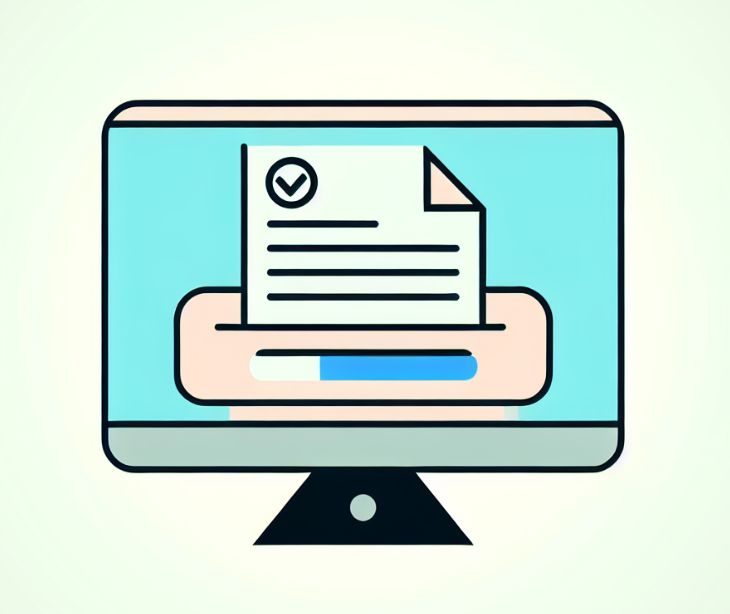2 min read
The benefits of using email for effective internal scheduling
Kirsten Peremore
April 09, 2024

Fifty-three percent of healthcare organizations need time and attendance solutions to minimize attendance fraud and improve workforce punctuality. Email is accessible, fast, and allows for widespread communication across all levels of healthcare staff. It supports the instant sharing of schedules, updates, and notices, leading to more organized and efficient operations.
Why effective internal scheduling is necessary
An International Workshop on Dynamic Scheduling Problems study, provided the following view on the necessity of Internal scheduling in hospitals: “Internal hospital logistics (IHL) include assigning, routing and scheduling decisions. People who work in IHL are confronted with pickup and delivery problems with time windows (PDPTWs) on a daily basis.”
Internal scheduling assigns healthcare staff to various duties and patient appointments within healthcare organizations such as hospitals, clinics, and small practices. This is typically managed by specialized scheduling coordinators or administrative personnel within the organization. The specific details of internal scheduling include balancing the expertise and specializations of the healthcare professionals with the expected patient load and the operational needs of different departments.
The need for efficient internal scheduling goes beyond the size of the healthcare organization, applying equally to larger hospital systems and modest community clinics. This foundational activity influences the organization's ability to deliver high-quality patient care promptly.
The signs of efficient internal scheduling
- Reduced wait times
- Balanced workloads
- High patient satisfaction
- Optimal resource utilization
- Low staff turnover
- Seamless shift transitions
- Flexibility in scheduling
- Consistent quality of care
- Effective communication
- Minimal overtime
See also: The HIPAA compliant scheduling app checklist
How email contributes to an effective internal scheduling strategy
Email offers improved communication, flexibility, and accountability to any internal scheduling in the following ways:
- Shift swap facilitation: Email allows staff members to easily request and coordinate shift swaps among themselves, subject to approval by their managers. This helps in covering unexpected absences or personal emergencies.
- Automated schedule distribution: Email can automatically distribute shift schedules to all relevant staff members at predetermined intervals through integration with scheduling software. This ensures everyone is aware of their upcoming shifts well in advance.
- Urgent shift coverage requests: In sudden staff shortages, email blasts can be sent to all available personnel to quickly find replacements. This targeted approach enables rapid response to staffing needs.
- Feedback on scheduling preferences: Email lets staff send their availability and preferences for shifts directly to the scheduling coordinators. This information can be used to create more personalized and accommodating schedules.
- Real time notifications of schedule changes: Immediate email notifications of any schedule changes ensure that all affected staff members are promptly informed.
- Additional protection of assured HIPAA compliance: When using HIPAA compliant email services for internal scheduling communications, healthcare organizations can be assured that any potential mention of protected health information (PHI) remains secure.
See also: Top 12 HIPAA compliant email services
FAQs
Can email help reduce scheduling conflicts in healthcare settings?
Yes, by providing a clear and documented form of communication, email helps minimize scheduling conflicts. Staff can easily reference their schedules, any updates, or changes sent via email, reducing misunderstandings and ensuring that shifts are covered efficiently.
How does email impact the cost of internal scheduling?
Email can reduce the costs associated with internal scheduling by decreasing the need for paper based schedules and minimizing the time administrators spend on communicating schedule changes.
How does email contribute to better communication for scheduling?
Email facilitates direct and immediate communication between scheduling coordinators and healthcare staff. It allows for the easy distribution of schedules, the ability to quickly notify staff of changes or new assignments, and the capacity to collect availability and preferences from staff, improving overall scheduling responsiveness and adaptability.
Subscribe to Paubox Weekly
Every Friday we'll bring you the most important news from Paubox. Our aim is to make you smarter, faster.




